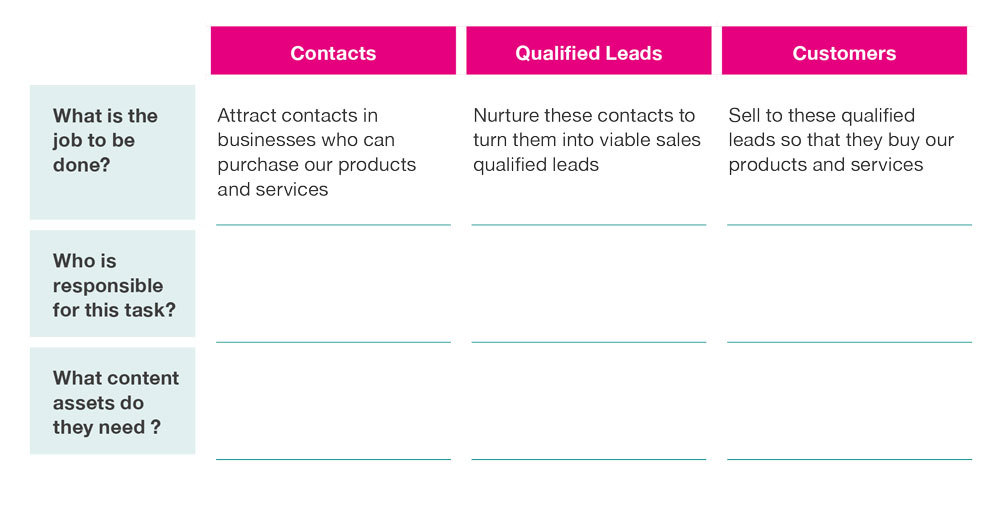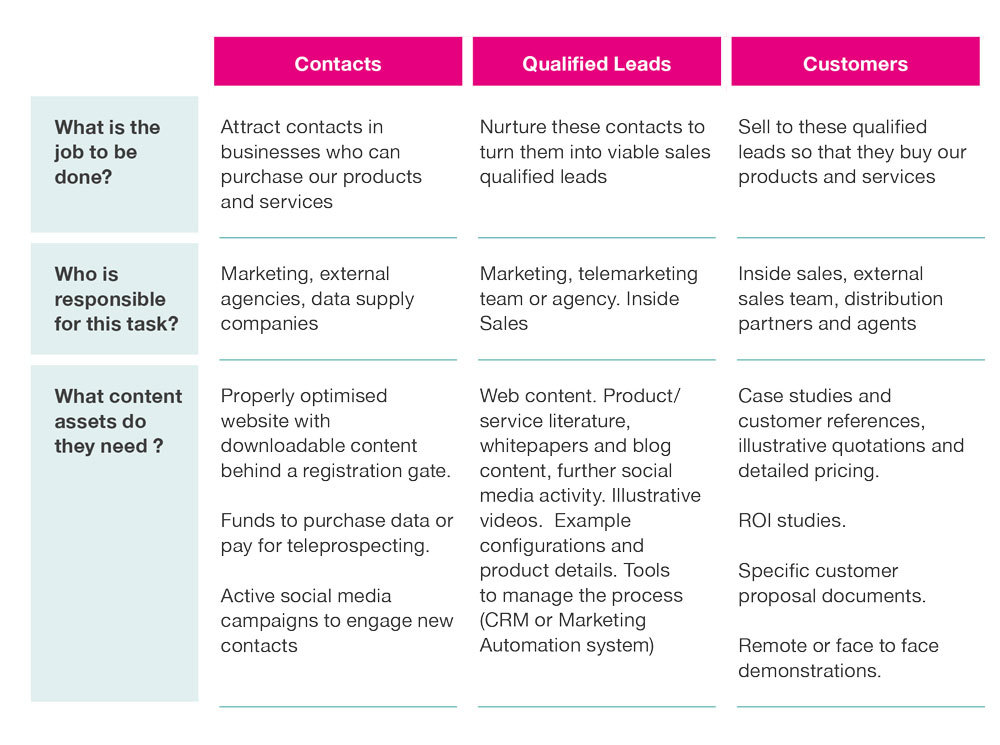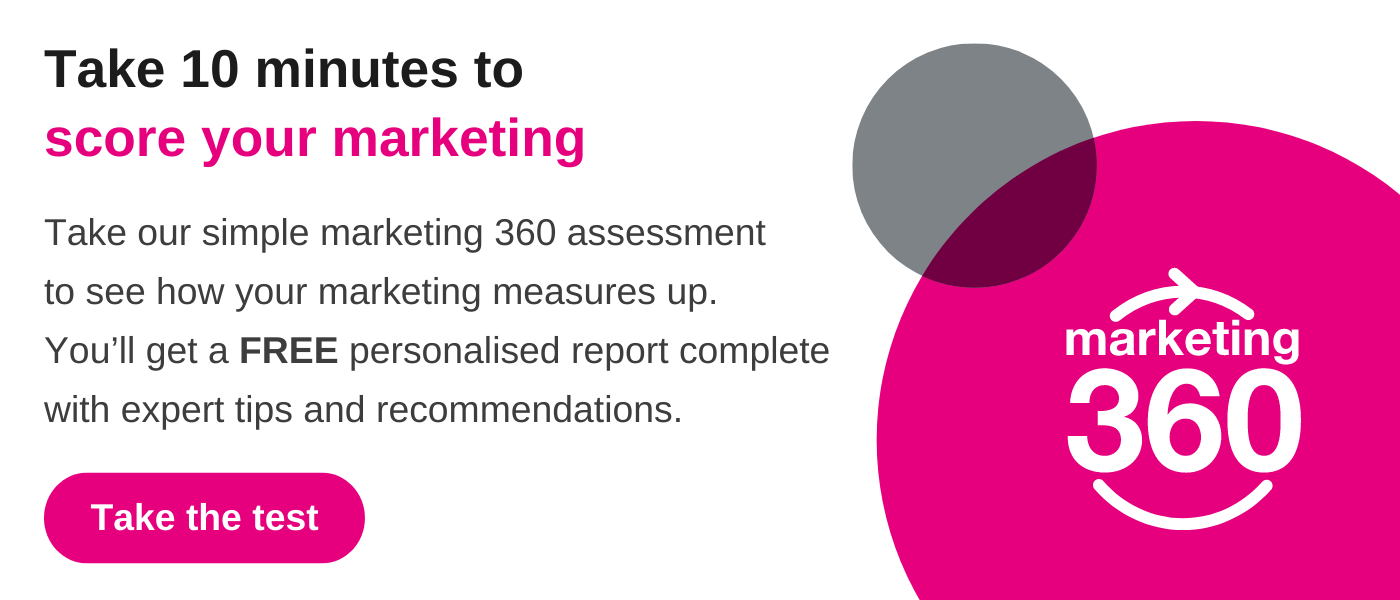Welcome to the fourth article in our series on lead generation: Lead Gen in 10. The premise is simple. Quickfire, practical, hands-on exercises that will improve every aspect of your lead generation process.
So far we’ve covered how to define a lead, how to calculate how many leads you need and how to generate the leads your business needs. In this piece, we’ll cover how the activities you need to have in place to keep leads moving through the sales process and how to agree who’s responsible for what.
Why leads get stuck
Poor lead generation often means a key asset or step in the process is missing or not being used. Nobody notices because the responsibility for generating and measuring results from an activity belongs to someone else.
Someone else is responsible for making calls, posting content, and sending messages to encourage prospects along the customer journey. But who are they?
Tip: The lead generation process needs to be mapped out. Tools like Lucidchart or Miro are really helpful for mapping out processes quickly.
You need to identify what resources should be used at each stage and who is responsible for moving prospects along.
Identifying your content assets will help you discover if you’re missing a crucial element for a stage of the process, like case studies that lend weight to your value proposition. Identifying the responsibility will ensure those pieces of content are actually being used in the right way at the right time by the right person.
What you’ll need:
10 minutes to get started, plus a pen and paper
Want 4 more exercises to improve your lead generation?
Our Lead Gen in 10 workbook will give you five useful exercises to improve every aspect of your lead generation.
The exercise
Start by drawing out a matrix, like this (or use our downloadable template here):
Write out what job needs to be done at each stage. Then write who is responsible for the task and what tools they need to perform the task.
Your matrix should end up looking something like this:

Acting on the results
Once you’ve found the gaps in your process, you have some decisions to make: if you don’t know which CRM system you need, or if content marketing is the right approach, this is the time to make those calls.
Then you can start assigning those missing responsibilities to the people capable of fulfilling them, and fine-tuning your marketing materials and activities to particular roles in your target audiences.
Lead generation is a process. The single question our part-time Marketing Directors hear again and again is “how do I get more leads” - and the single question we always come back with is “what are you doing with the ones you have?”
That question shouldn’t leave you flummoxed once you've worked through the exercise above.
Good job!
You now know the key activities that you need to keep prospects moving through the funnel and who’s responsible for what. No more opportunities slipping through the cracks!This is the third exercise in our Lead Gen in 10 series. For more exercises to help you close more new business from your lead generation activity, check out the other exercises below:
- What's a ‘good’ lead? And how to get sales and marketing to agree
- How many leads do you need to hit your revenue targets?
- How to Land the Leads Your Business Needs
- How to re-energise 'old and cold' sales opportunities in your CRM
Or click here to get the entire series in one handy workbook.
Find the gaps in your marketing
If you've followed all the exercises in this series your lead gen should already be picking up. But there's more to marketing than just lead generation.
Our Marketing 360 assessment will help you identify other potential issues and offer advice on how to solve them.
Click here to get your Marketing Maturity Score.





